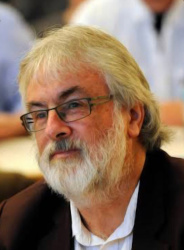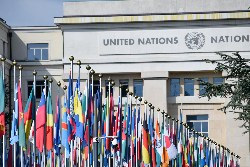“Super-Duper” City a Bad Idea
By Geoffrey And Reihana Robinson
The Auckland “Super City” experiment may ultimately produce better local government. Better for business, certainly – not necessarily for regular citizens.
But an All-Waikato “Super-Duper City”, with one-stop regional council control from Taupo to the Bombay Hills would be a guaranteed failure, despite its appeal to government and its corporate sponsors. For far-flung residents of the Coromandel Peninsula in particular, plans reportedly on the table spell a democracy disaster.
Wrapping up a one-day conference in Karapiro today (August 10), Waikato Regional Council and their big business handlers moved the amalgamation process ahead with a session for councils and “interested stakeholders” from around the region. For the unitiated, “stakeholders” translates as business interests, not ordinary citizens. A $57.50 cover charge for individuals and limited advance publicity made sure Mr and Mrs Ratepayer felt uninvited.
The presentation of Tainui Group Holding’s Mike Pohio said it all. His subject was “what business and iwi need from local government”. The rest of us might think “what ordinary Kiwi citizens need from local government” is more important. But Pohio’s focus reflects similar attitudes at WRC, where CEO Bob Laing back in June publicly committed to keeping his staff -- not the public -- informed about pending changes.
For several years, single-tier local government has been on the cards for Hamilton City and the districts comprising its economic and residential catchments. Despite concerns on the part of neighbouring district councils about potentially reduced local control, the case for a “unitary” Hamilton council is compelling. Various border options have been suggested, with special consideration now being given to river catchments.
But in the amalgamation frenzy encouraged by pending local government reform legislation, sprawling region-wide “Super-Duper” councils are reportedly under consideration. In the case of the central North Island, this could mean a massive “unitary” All-Waikato Council and a sister council combining all six districts of the Bay of Plenty.
In June, reports surfaced that Waikato and Bay of Plenty regional councils were considering amalgamation options including boundary tradeoffs. BOP district councils have already expressed interest in a single-tier council for their region. And reportedly there has been interest in Tauranga for sweeping the Thames-Coromandel District into their new council boundaries. At the end of the day, nothing could be worse for Coromandel Peninsula citizens.
As things stand now, the Waikato Region is already too big for effective local government. It’s one reason Thames-Coromandel District has been at loggerheads with WRC for years. Botched harbour management, pest operations resulting in police swat team callouts, targeted rating contrary to council policy, and inappropriate WRC land designations prompting a recent landowner revolt are only the iceberg tip. Complaints about a distant, costly, bungling, and out-of-touch regional council abound.
And it’s easy to see why WRC can’t effectively handle all that’s on its management plate. According to Google, it takes 11 hours and 36 minutes to drive from one end of the Waikato on the northern Coromandel to Turangi and back. That’s five minutes more than a long-haul flight from Auckland to Hong Kong.
Coromandel residents have been pressuring since last year for their own single-tier unitary council, possibly with Hauraki and Matamata-Piako districts, to provide affordable services and infrastructure. Their plan would reflect well-defined, natural geographic features and provide efficient management of the Piako and Waihou river catchments. Above all, it would facilitate planning and policy development appropriate for their unique regional economy and community aspirations, which are worlds apart from those of Hamilton and Tauranga. And, of course, a smaller local council would be that much more accountable to its ratepayers and the general public.
Understandably, a unitary Coromandel/Hauraki/M-P council with roughly 80,000-plus population would not be top choice of a business-first National government. Pushing through controversial economic development plans against popular concerns for the environment, for example, is much easier with big-city council muscle-power.
The prospect of being fobbed off by Waikato Regional Council and traded to a powerhouse council based in Tauranga would mean going from bad to worse for the Coromandel and its neighbours. Those districts would lose their local council buffers against inappropriate regional council policy and programmes. And as for their new regional overseers, they would simply shift from remote Hamilton to remote Tauranga. If the Coromandel, Hauraki, and M-P were to be retained in a single all-Waikato council, the outcome for local residents would be no better.
Either way, the “Super-Duper City” scenario is not likely to happen without a fight – if not from eastern mayors, then from their residents and ratepayers. Backers of the “super” plans are only listening to themselves so far. They would be well advised to start listening to the public.
(robinsonsreport@gmail.com)
ENDS


 Ian Powell: Cuba And New Zealand: A Relationship Worthy Of Strengthening
Ian Powell: Cuba And New Zealand: A Relationship Worthy Of Strengthening Gordon Campbell: On bird flu, AUKUS entry fees and Cindy Lee
Gordon Campbell: On bird flu, AUKUS entry fees and Cindy Lee Binoy Kampmark: Israel’s Anti-UNRWA Campaign Falls Flat
Binoy Kampmark: Israel’s Anti-UNRWA Campaign Falls Flat Peter Dunne: Luxon Gets Out His Butcher's Knife - Briefly
Peter Dunne: Luxon Gets Out His Butcher's Knife - Briefly Binoy Kampmark: Warring Against Encryption, Australia Is Coming For Your Communications
Binoy Kampmark: Warring Against Encryption, Australia Is Coming For Your Communications Gordon Campbell: On Fast Track Powers, Media Woes And The Tiktok Ban
Gordon Campbell: On Fast Track Powers, Media Woes And The Tiktok Ban